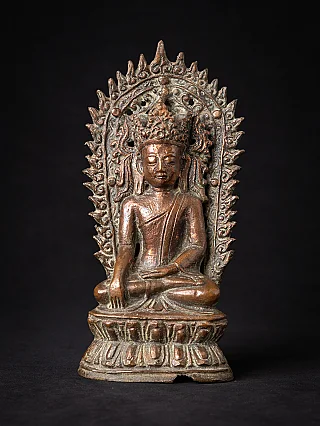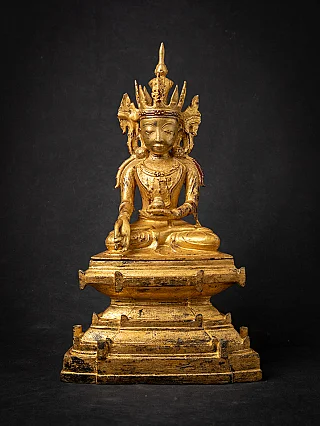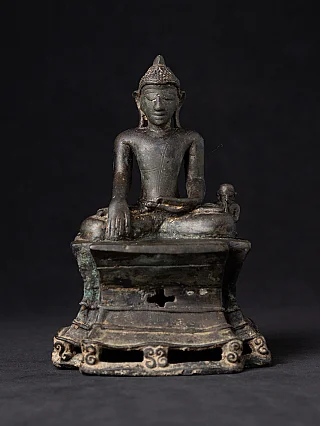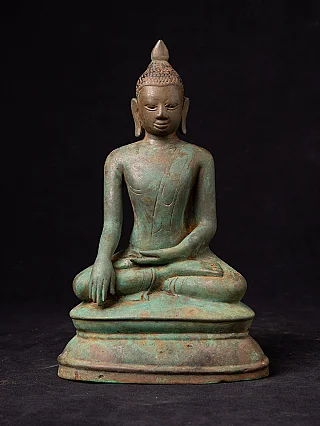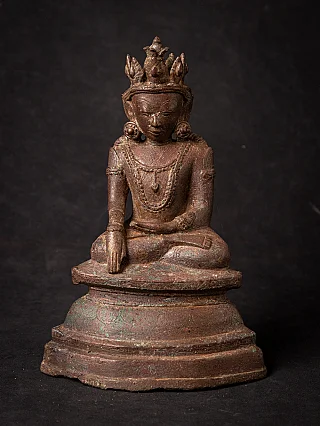The Mahamuni Buddha Image - One of Five Likeliness of Buddha
Author : Peter Vredeveld

The Mahamuni Buddha image is one of the five likeliness of Buddha ever made and is enshrined in the inner chamber of Mahamuni Pagoda in Mandalay, Burma.
The Mahamuni Buddha Temple is one of the famous Buddhist temples and is considered a primary pilgrimage site. It is located in the Mandalay region of Burma. The Mahamuni Buddha temple is home to one of the ancient Buddha images and was believed to have originated from the ancient kingdom of Arakan. The Mahamuni Buddha Image is also known as The Great Sage and is essential in the lives of people around Mandalay.
The Mahamuni Pagoda was constructed in 1785 under the Konbaung Emperor, King Bodawapaya. The Mahamuni Buddha image was believed to have been captured during the invasion of the Arakan Kingdom by the Konbaung Dynasty. According to records of Buddhism, only five Buddha likeliness were made, and the Mahamuni Buddha image is one of them. Two are located in India, and the other two are believed to be made in paradise.
Origin of Mahamuni Buddha Image
This great and magnificent feature of the Arakan Kingdom shows the involvement of Lord Buddha in the Arakan Kingdom. According to the legend, Lord Buddha once visited Dhanyawadi, the capital of the Arakan Kingdom, to spread Buddhism in the land of Arakan. The story of Gau Tama Buddha's seven-day visit and 500 Buddhist monks is recorded in the Mahamuni Pagoda. The King of Arakan greatly welcomed Lord Buddha, his 500 disciples, and Chief Queen Sandra Mala, at the mountain peak near Khaukrah. King and Queen were accompanied by Ministers, generals, officials, and the Queen's 1600 ladies advisors.

Lord Buddha preached and taught about Dharma and other essential sutras to the Kings and Queens. The King, impressed by Lord Buddha's teachings, asked Lord Buddha to make his image. Accepting the King's request, Lord Buddha decided to sit under the Bodhi Tree for a week so that he could meditate. Two Buddha disciples, Sakka, and his assistant Visakkamma, made a pavilion so that no trouble would arrive during Lord Buddha's meditation and would enjoy the stay in the Arakan Kingdom. After the Buddha image was crafted, people in the Arakan kingdom called it the Mahamuni Living Image of Buddha. Lord Buddha himself named the image "Candasara" and stated that this Buddha image would represent Lord Buddha for Five Thousand Years.
Mahamuni Buddha Image
The Mahamuni Image is the main center of attraction of the Mahamuni Buddha Temple and holds religious importance in Burmese Buddhism. This image is enshrined in a chamber inside the Mahamuni Pagoda or temple. The image is seated on a throne in Bhumisparsa Mudra. The Bhumisparsa mudra is considered a divine posture, and it is believed that it signifies Lord Buddha vanquishing the Mara demon. The Mahamuni Buddha image is enshrined on 1.8 a 1.8-inch pedestal, and this image is 3.8 meters high and weighs more than 6 tons.
The Buddha image is covered with royal costumes, which consist of Brahmanic cords around the image chest. The image is decorated with jewelry, rubies, and sapphires, and the image is also crowned. The male devotees apply gold lead to this image to pay respect to the Mahamuni image. That is the reason for the distorted shape of the image since the gold leaf applied made a thick layer of about 15 centimeters.
Daily Washing Rituals
Washing rituals are performed daily by the senior monk, who is dressed in a monastic robe. Ven Sayadaw Buddhanta Panya Vamsa of Htilin Monastery and Pitaka Kyaung started this Mahamuni Buddha image-washing ritual. The ritual commences at 4 am or 4:30 am. The ritual begins with a formal face wash and cleaning with a fresh towel offered by devotees. The senior monk then cleans Mahamuni's teeth with a large brush and uses a fresh towel again. Then, the monk uses Sandalwood paste on the Mahamuni image, and once again, a fresh towel is used to clean the image. After the ritual, the used towel is returned to the devotees, who keep it in their homes.
Share this page


















